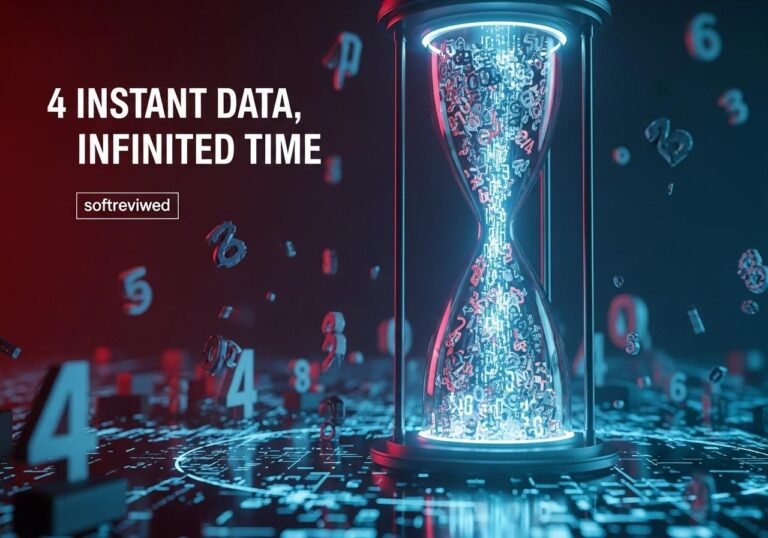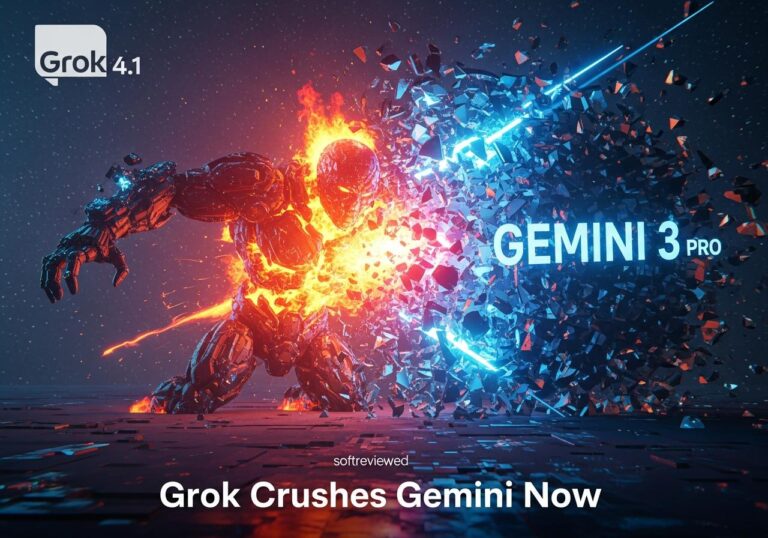Intelligent Data Extraction Framework
Transform unstructured information into actionable structured data with advanced AI-powered extraction capabilities
One-Click Transformation
Convert unstructured text (clinical notes, legal documents, customer feedback) into structured data with minimal code, eliminating hours of manual categorization and organization.
Precise Source Mapping
Every extracted entity links to its exact location in source text with visual highlighting for instant verification – no more cross-referencing errors or wasted validation time.
Schema Enforcement Without Fine-Tuning
Define extraction tasks using just a few examples to ensure consistent, structured output that perfectly matches your database requirements – no machine learning expertise needed.
Massive Document Mastery
Handles million-token documents through optimized chunking and parallel processing, maintaining high accuracy where conventional methods fail in “needle-in-a-haystack” scenarios.
Interactive Report Generation
Create shareable HTML visualizations with one command to instantly review and verify extracted data in context, accelerating team collaboration and decision-making.
Flexible Model Integration
Seamlessly works with Gemini and other LLMs (cloud or local) to optimize cost, privacy, and performance based on your specific processing needs.
Google's Revolutionary Text Processing Library Changes Everything
Picture this: You have thousands of medical reports, legal documents, or research papers sitting in folders, packed with valuable information that's completely inaccessible. Manual extraction would take weeks, and traditional tools fall short when dealing with complex, unstructured text.
Google just solved this problem with LangExtract, an open-source Python library that transforms chaotic text into perfectly structured data using the power of Gemini AI models. Released in July 2025, this tool represents a significant breakthrough in information extraction technology, offering developers and content creators unprecedented control over text processing workflows.
Whether you're analyzing customer feedback, processing clinical notes, or extracting insights from research papers, LangExtract promises to revolutionize how we handle unstructured text data. Let's explore what makes this tool so powerful and how it can transform your content analysis process.
From Google's Labs to Your Python Environment
The development of LangExtract stems from a fundamental challenge in AI: while large language models excel at understanding text, they often struggle with reliable, structured information extraction. Traditional approaches either rely on rigid pattern matching or produce inconsistent results when processing complex documents.
Google's research team, led by ML Software Engineers Akshay Goel and Atilla Kiraly, designed LangExtract to bridge this gap. The library leverages Google's Gemini models to provide what they call "controlled generation" – ensuring outputs are both accurate and consistently formatted.
This isn't just another text processing tool. LangExtract addresses critical issues that have plagued information extraction for years: hallucinations, lack of source grounding, inconsistent outputs, and poor handling of long documents.
Six Game-Changing Features That Set LangExtract Apart
📌 Precise Source Grounding
Every extracted piece of information maps directly to its exact location in the original text. This means you can click on any extracted entity and see exactly where it came from in the source document. This traceability feature eliminates guesswork and builds trust in automated extractions.
✅ Reliable Structured Outputs
Using few-shot examples, LangExtract enforces consistent JSON schemas across all extractions. You define the output format once, and the system maintains that structure regardless of input complexity. This eliminates the frustration of cleaning inconsistent AI outputs.
⛔️ Optimized Long Document Processing
Traditional tools struggle with documents exceeding context limits. LangExtract uses intelligent chunking, parallel processing, and multiple extraction passes to handle massive documents efficiently. Reports and research papers with hundreds of pages become manageable.
👉 Interactive HTML Visualizations
Generate beautiful, interactive reports with a single command. These visualizations let you explore extracted entities in context, making review and validation incredibly efficient. No more switching between spreadsheets and source documents.
➡️ Flexible Model Support
Works with cloud-based models like Gemini and local models via Ollama. This flexibility lets you balance cost, privacy, and performance based on your specific needs. Enterprise users can keep sensitive data on-premises while still leveraging powerful extraction capabilities.
📌 No Fine-Tuning Required
Define extraction tasks using natural language prompts and examples. Unlike traditional machine learning approaches, LangExtract adapts to new domains without requiring model retraining or technical ML expertise.
Real-World Applications Across Industries

Healthcare and Medical Research
LangExtract's RadExtract implementation specifically targets medical documents. Hospitals can extract medications, dosages, diagnoses, and treatment plans from clinical notes, converting unstructured medical records into structured databases for research and analysis.
Legal Document Processing
Law firms process contracts, case files, and legal briefs to extract clauses, dates, parties, and key obligations. This automation reduces manual review time from days to hours while maintaining accuracy for compliance requirements.
Content and Literary Analysis
Researchers analyze novels, scripts, and academic papers to identify characters, relationships, themes, and citations. The full Romeo and Juliet extraction example demonstrates processing 25,000+ words to identify 147 character mentions and emotional states.
Business Intelligence
Companies extract competitor information, product mentions, financial metrics, and market sentiment from news articles, reports, and social media. This structured data feeds directly into business intelligence dashboards and decision-making processes.
Getting Started: Your First LangExtract Project
Setting up LangExtract takes less than five minutes. Here's the essential workflow:
Installation and Setup
pip install langextract
export LANGEXTRACT_API_KEY="your-gemini-api-key"
text
Define Your Extraction Task
Create a clear prompt describing what you want to extract, then provide one high-quality example to guide the model:
import langextract as lx
prompt = "Extract company names, financial metrics, and market sentiment"
examples = [lx.data.ExampleData(…)] # Your example here
text
Process Your Content
result = lx.extract(
text_or_documents=input_text,
prompt_description=prompt,
examples=examples,
model_id="gemini-2.5-flash"
)
text
Generate Visualizations
lx.io.save_annotated_documents([result], "results.jsonl")
html_content = lx.visualize("results.jsonl")
text
The gemini-2.5-flash model offers the best balance of speed, cost, and quality for most use cases. For complex reasoning tasks, gemini-2.5-pro provides superior results but at higher cost.
Advantages and Potential Limitations
Key Benefits
✅ Zero Learning Curve: Natural language prompts eliminate technical barriers
✅ Cost-Effective: Process thousands of pages for pennies using efficient models
✅ Production-Ready: Built-in error handling and scalability features
✅ Open Source: Apache 2.0 license ensures long-term accessibility
✅ Community Support: Active developer community and regular updates
Considerations
⛔️ API Dependency: Cloud models require internet connectivity and API costs
⛔️ Quality Varies: Output accuracy depends on prompt quality and model selection
⛔️ Learning Curve: Effective prompt engineering requires practice and iteration
⛔️ Rate Limits: Heavy usage may hit API quotas, requiring Tier 2 subscriptions
Community Response and Expert Insights
The developer community has embraced LangExtract enthusiastically. Akshay Goel, one of the key contributors, expressed excitement about seeing innovative applications from users. Developer Kyle Brown described it as "a major step forward in AI transparency, converting unstructured text into structured, understandable data."
The rapid community adoption includes a TypeScript port that supports both OpenAI and Gemini models, demonstrating the tool's versatility and developer appeal. This community-driven expansion shows LangExtract's potential to become a standard tool in the AI development ecosystem.
Industry experts highlight LangExtract's unique combination of accuracy, traceability, and ease of use. Unlike traditional extraction tools that require extensive setup, LangExtract lets developers focus on defining what they want rather than how to extract it.
Comparing LangExtract to Existing Solutions
| Feature | LangExtract | Traditional NLP Tools | Custom ML Models |
|---|---|---|---|
| Setup Time | Minutes | Hours to Days | Weeks to Months |
| Source Grounding | ✅ Built-in | ⛔️ Manual Implementation | ⛔️ Complex Setup |
| Long Documents | ✅ Optimized | ⛔️ Limited | ⛔️ Context Issues |
| Visualization | ✅ Automatic | ⛔️ Manual | ⛔️ Custom Development |
| Cost | Low (API usage) | Medium (Infrastructure) | High (Development) |
| Maintenance | Minimal | Regular Updates | Ongoing Training |
Maximizing Your LangExtract Success
Best Practices for Content Creators:
📌 Start Simple: Begin with basic extractions before attempting complex multi-entity tasks
📌 Iterate Prompts: Test different prompt variations to find what works best for your content
📌 Quality Examples: Invest time in creating representative few-shot examples
📌 Batch Processing: Group similar documents for more efficient processing
📌 Cost Management: Use gemini-2.5-flash for development and testing before scaling up
Pricing Considerations:
For Indian content creators, costs are approximately ₹0.50-2.00 ($0.006-0.024) per 1,000 tokens processed. A typical blog post (1,000 words) costs under ₹5 ($0.06) to process, making it extremely affordable for regular content analysis.
The Future of Structured Content Extraction
LangExtract represents more than just another AI tool – it's a fundamental shift toward democratized information extraction. By removing technical barriers and providing transparent, traceable results, it opens advanced text processing to content creators, researchers, and businesses regardless of their technical background.
The library's open-source nature ensures continued development and community-driven improvements. With Google's backing and active community support, LangExtract is positioned to become the standard for AI-powered information extraction.
For content creators and digital marketers, this tool offers unprecedented opportunities to analyze competitor content, extract insights from research papers, and structure customer feedback at scale. The combination of accuracy, affordability, and ease of use makes LangExtract an essential addition to any content professional's toolkit.
The era of manually processing unstructured text is ending. With LangExtract, the future of content analysis is structured, traceable, and accessible to everyone.







